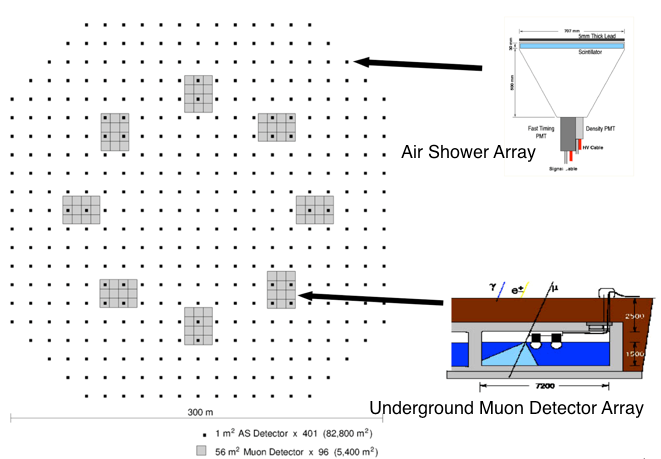Air Shower Array
When an ultra-high-energy cosmic-ray particle plunges into the atmosphere of the Earth, it collides with an atomic nucleus such as nitrogen and oxygen, and produces multiple secondary particles. These secondary particles in turn collide with atomic nuclei in the atmosphere, and produce particles again. A number of repetitions of this process form an extensive cascade of secondary particles, which rains down on the ground with a planar shape. This cascade of particles is called an air shower. A primary gamma-ray particle also induces an air shower through electromagnetic reactions in the atmosphere. Using an array of detectors on the ground to observe air-shower particles, we can measure the energy and the arrival direction of the primary cosmic-ray particle that induced the air shower, based on the distribution of particle densities and timings recorded by the detectors. The experimental site is a plateau located 4,740 m above sea level halfway up Mt. Chacaltaya, Bolivia. The altitude of this site corresponds to the atmospheric depth where an air shower meets its great development. We are planning to continuously observe ultra-high-energy cosmic rays and gamma rays with the ALPACA air shower array, currently designed as an array of 401 surface particle detectors covering the area of 83,000 m2.
Schematic view of the current design of the whole ALPACA observatory. Small black squares, 401 in total, are 1 m2 surface particle detectors that compose the ALPACA air shower array.

Image of the ALPACA air shower array. The photo shows the air shower array of the Tibet ASγ experiment, located on a highland in Tibet at the altitude of 4,300 m.
Image Credit: Institute for Cosmic Ray Research, University of Tokyo

